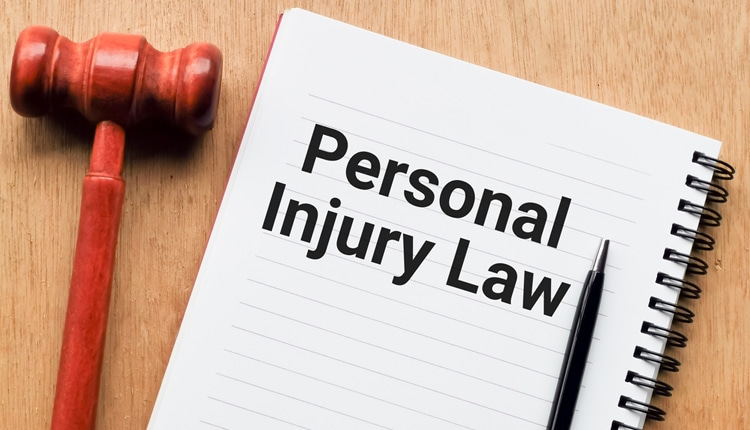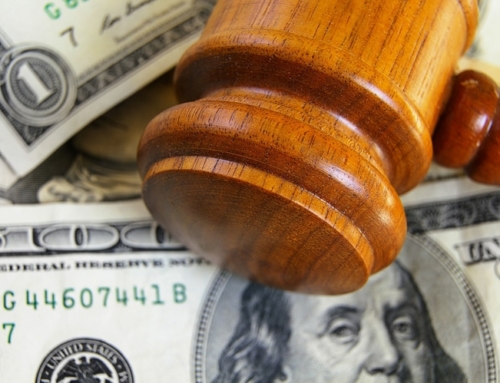Who is liable for an accident on an easement? That is one specific question that does not have an easy answer. There are many factors to consider in cases that involve easements. No two cases are completely identical. You need to take a different approach to each case to understand what is going on.
If you have been dealing with some issues related to an easement on your property, then you have come to the right place. This article contains plenty of helpful details, so please read on if you wish to gain more insight into your situation.
By the end of this, you should have a better idea of how to handle the situation involving your easement.
What Is an Easement?
Before we get into how they legally distribute easements, let’s clearly define it. In essence, an easement is a legal right that gives one party the option of using someone else’s land for specific purposes.
The other party may need access to the easement for private use. This type of situation pops up often among neighbors. If your neighbor cannot get to their home without crossing over your property, then the strip of land they often use as an access point is an easement.
It is not only private individuals that use easements. Public corporations may also need access to easements to provide their services.
Corporations are not violating any laws if they make use of easements. Texas law even states that a gas or electric corporation possesses the power to own, hold, or use an easement if they need it to continue offering their services to their customers.
Although corporations can own, hold, or use easements, there are still limits on what they can do with them. For example, the corporation currently utilizing the easement cannot stop others from using it as long as the additional usage does not interfere with what they are doing. That provision allows property owners to continue using the easement in certain ways.
Notably, corporations that have ownership of an easement cannot conduct business there. They can use the easement to run their services, but actually conducting business on that property is forbidden.
What Are the Types of Easements?
Since we are already getting into how you can use easements, this is a good time to start talking about the different types of easements. Easements can vary in terms of ownership and purpose. Let’s get into them further in the section below.
Private Easements
First off, we have private easements. Private easements are agreements between neighbors. Your neighbor may ask you if they can install something on your property because they have no space available. If you agree to help them, then you create a private easement.
This is probably the simplest type to manage because only you and your neighbor are involved. The two of you can discuss the terms, set the necessary limitations, and hammer out the details. Remember to have your lawyer check the agreement before you sign it to ensure that you are not giving up more than you intend to.
Note that creating a private easement is not something you need to do for your neighbor. If they are being unreasonable with their demands, you are well within your rights to refuse them.
As Rocket Mortgage points out, creating a private easement can also be a risky proposition long-term. Since you are granting your neighbor access to your property, you cannot do as much with it as you would like. Selling your property could also be trickier because that easement could get in the way.
Think carefully about creating a private easement so you do not regret your decision.
Access Easements
Similar to private easements, access easements are agreements that you typically arrange with your neighbor. You make an access easement when a property owner cannot enter their land without crossing over another property. In that scenario, your neighbor has no choice but to use your property, or else they cannot get home.
Crucially, property owners cannot control whether you make an access easement or not. If your neighbor needs an access easement, you need to grant it to them. Keep that in mind as you decide whether you want to put money down for a specific property.
Utility Easements
Next up, we have the utility easements. We already touched on these earlier, but we can highlight more details now.
There is no denying the fact that utility easements can limit what property owners can do. If you want to cover your yard with trees or build fountains, the utility easement may stop you from doing that. The law grants utility companies that kind of privilege, so you do not have much say over the matter.
You should also know those utility companies are allowed to install new pieces of equipment on utility easements. The law grants them that privilege so there is a possibility that your property could look different from what you envisioned.
Still, utility companies mostly only use easements to bury supply lines. That can still be bothersome, but it beats the alternatives.
Carefully consider if you want to own property that they can use as a utility easement.
Prescriptive Easements
Lastly, we have prescriptive easements. All three easement types discussed so far can be inconvenient to property owners. However, prescriptive easements are on a different level.
Basically, prescriptive easements are created when a property owner allows another individual to use their property without consent.
Per this article from Texas A&M University, other elements are required to create a prescriptive easement. Those elements include open and notorious usage of the property, exclusive use, use of a defined stretch of property, and uninterrupted use.
If you allow someone to use your property that way, the court may interpret the situation as you voluntarily giving up your land. You obviously do not want that kind of thing happening, so let your neighbor know they are doing something without your consent. Do not hesitate to get your lawyer involved if you want to resolve that situation as quickly as possible.
What Happens if Someone Has an Accident on an Easement?
When you invite someone to your home, you assume responsibility for their safety. You must give them a space where they can relax and enjoy themselves. If something does go wrong, you must answer for that as well.
You must take responsibility if someone slips and falls inside your home because you forgot to clean a wet spot. The task of compensating your injured guest will either fall to you or your insurer.
It is easy to understand how things may go if the accident happened on your property. But what happens if the accident took place on an easement? Who will take responsibility in that situation?
Two important factors will determine which party will need to assume responsibility for the accident. Let’s discuss those factors in greater detail below.
The Type of Easement
The first factor that helps determine the liability is the type of agreement you have. The government or the corporation using it must maintain a utility easement. Those entities will be in charge of keeping that area clean and safe. Failing to do so opens them up to potential liability.
If someone gets electrocuted by an exposed wire found on the easement, the company must cover their medical bills. In this scenario, the property owner does not need to worry about a lawsuit. Private, access and prescriptive easements are different. The property owner must still maintain those types of easements.
The property owner will also be the party who must take responsibility if an accident occurs on the easement. Hopefully, your insurance will kick in and save you from making a hefty payment out of pocket.
Remember that as you decide if you want to create an easement.
The Party That Damaged the Easement
The property owner is not always the party responsible for maintaining private, access, or prescriptive easements. Sometimes, that can be on your neighbor or whichever party is using the easement.
Responsibility shifts to your neighbor if they damaged the easement beforehand. If they injure another party because of the damaged easement, your neighbor can be responsible because they failed to fulfill their obligation.
How Are Easements Created?
Easements can be created in three different ways. Learn more about those easement creation methods in the next section.
Easements Made Using Written Agreements
You can formalize easements using written agreements. You discuss the matter with your neighbor, and once you have come to terms, you can put them down on paper.
Use that agreement to outline the conditions of caring for the easement. Indicate what your responsibilities are and what your neighbor must answer for. It is important to hammer those details out, so everyone knows who will take responsibility for a particular type of accident.
Once you and your neighbor have agreed upon the terms of the document, make sure you have it reviewed by your lawyer. Have them pore over the details so you can be sure that you are not exposed in any way.
Implied Easements
You also have implied easements. Documentation is not required because the need to create the easement is obvious.
Access easements are often implied easements. Unless you can come up with some simple way to give your neighbor access to their property without them having to use your walkway for a bit, you simply have to offer that privilege to them.
Withholding that easement is not an option. Even the courts will not side with you in that scenario.
Easements by Necessity
So, what happens if you continually reject your neighbor’s offer to create an easement even though they need it to reach their home? Well, that will likely lead to the court getting involved. When they do, they will create something known as an easement by necessity.
It is up to you to decide if you want to hold firm and wait for an easement by necessity before you concede a part of your property.
How Are Easements Terminated?
Easements typically do not stay in place forever. You can terminate them for different reasons. For example, you can terminate an agreement if the owner sells the property covering the easement. If your neighbor wants to continue the easement agreement, they will need to discuss that matter with the person who purchased your property.
An easement agreement also becomes invalid after it expires. The agreement may also not affect your property if the party using the easement does not live up to the terms outlined in the written document. However, that can only happen if the document specifically states that non-compliance can lead to the termination of the agreement.
The easement may also revert to its original state if the party that was supposed to use it abandons it. Foreclosure and condemnation are also legal actions that can terminate an existing easement agreement.
Finally, you can terminate easement agreements via a grant of release. Any grant of release used to terminate an existing easement agreement should be written down and included in county land records. Failing to document that grant of release can lead to issues in the future, so do not forget to secure it beforehand.
Determining liability in easement accident cases can be a complicated undertaking. You will need an expert lawyer to guide you through that ordeal. Work with us at Barrus Injury Lawyers and let us help you deal with that situation.





